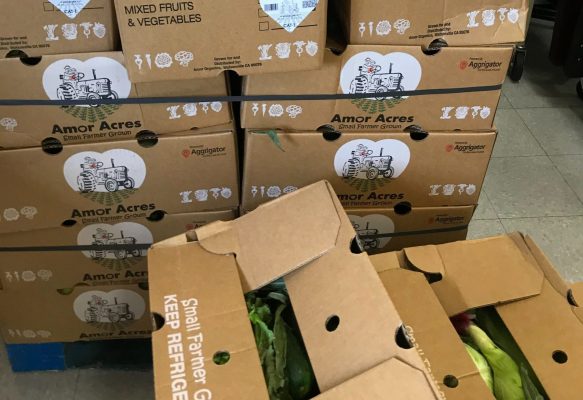
Much like in the early days of the COVID-19 pandemic, grocery stores shelves are again bare, and supply chain disruptions are causing food shortages across the United States. Public institutions like schools also struggle to source the ingredients they need to serve nutritious meals.
However, the problem isn’t due to a lack of food production. Instead, experts say, the shortage is caused by a handful of different problems preventing food from reaching the end consumer. Labor shortages at all levels of the food supply chain are a key factor–from grocery store clerks to restaurant waitstaff to meat processors. This isn’t a new phenomenon. Workers in many industries, who are frequently subjected to low wages, poor working conditions, and abusive treatment from employers and customers alike, have been quitting in large numbers since the start of the pandemic. In addition to resignations, covid infections have impacted worker availability, a problem exacerbated by companies not implementing proper worker protections against the virus.
Other disruption sources include import backlogs and unforeseen problems like product recalls due to foodborne disease outbreaks and severe weather. These problems can cause slowdowns that extend beyond the local area and ripple outward to impact other parts of the food supply chain.
It’s not just grocery stores feeling the pinch of supply chain disruptions. School districts throughout the nation are struggling to access the products they need to provide healthy meals. We’re seeing school food service managers rethink their sourcing to overcome these supply disruptions. Many are starting to source locally via farm-to-school programs. Besides providing schools with much-needed fresh ingredients, it has the added benefit of supporting farmers and the local community.
Organizations and legislators across the country are coming together to address the supply chain crisis in schools. There are five farm-to-school related bills included in the upcoming Childhood Nutrition Reauthorization (CNR):
- The Farm to School Act of 2021 would triple F2S funding.
- The Kids Eat Local Act would make it easier for school meal programs to source locally.
- The Local School Foods Expansion Act would allow schools in 14 states more flexibility in buying fresh local food.
- The Food and Nutrition Education in Schools Act would create more F2S school educator positions.
- The School Food Modernization Act would fund cafeteria kitchen upgrades.
Advocates hope that the increased interest in such programs signals a shift in priorities for child nutrition and school foods. One expert notes in Civil Eats that “It’s not just about getting fresh food into local schools. . . There also needs to be a buildup of support for farmers, so they can plan and have bigger markets, and for infrastructure that can process local food.”
Share this post
Share on facebook
Share on twitter
Share on linkedin
Share on pinterest
Share on print
Share on email
